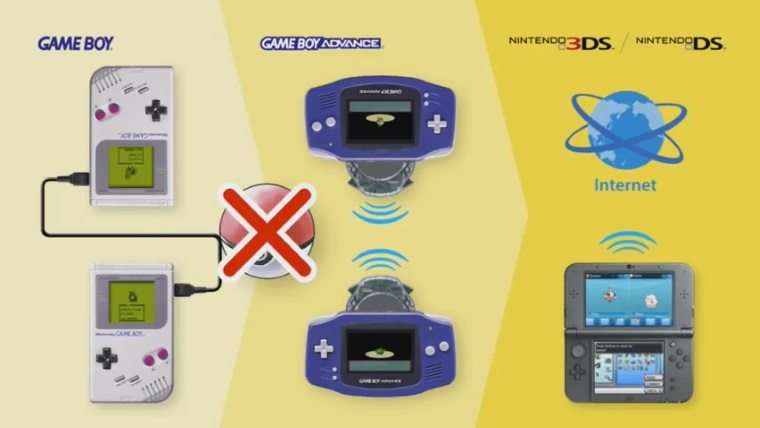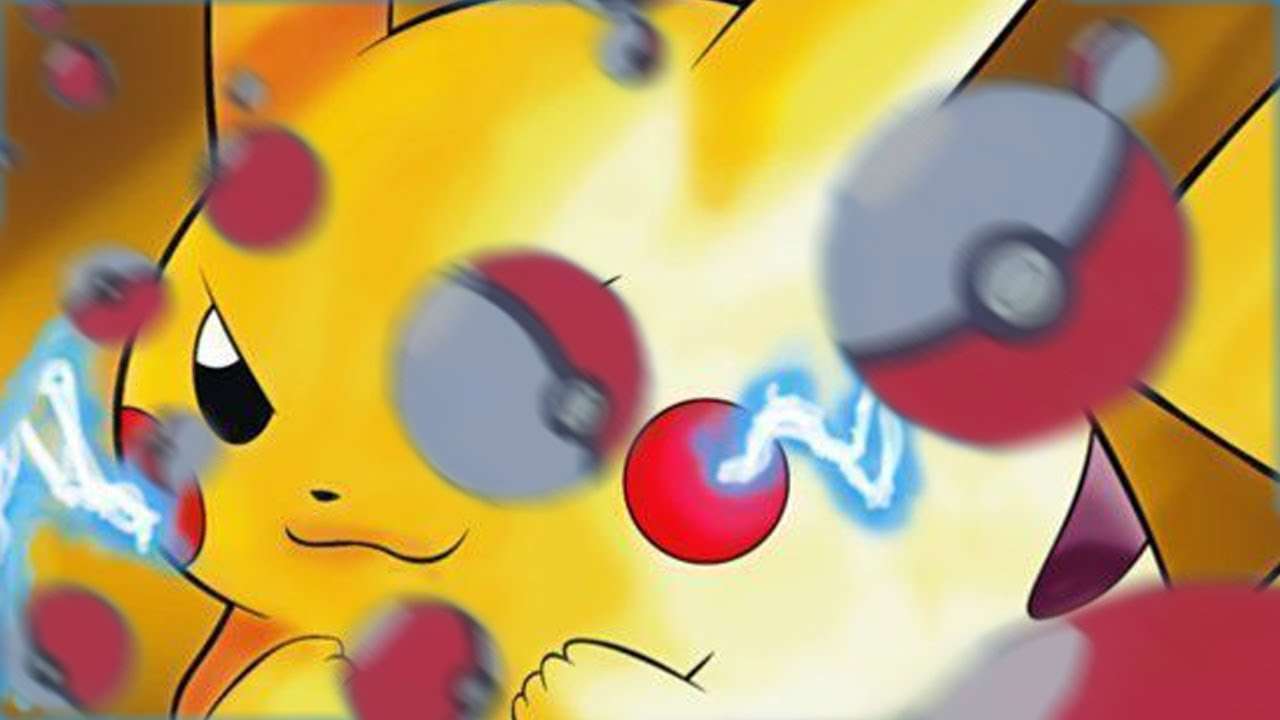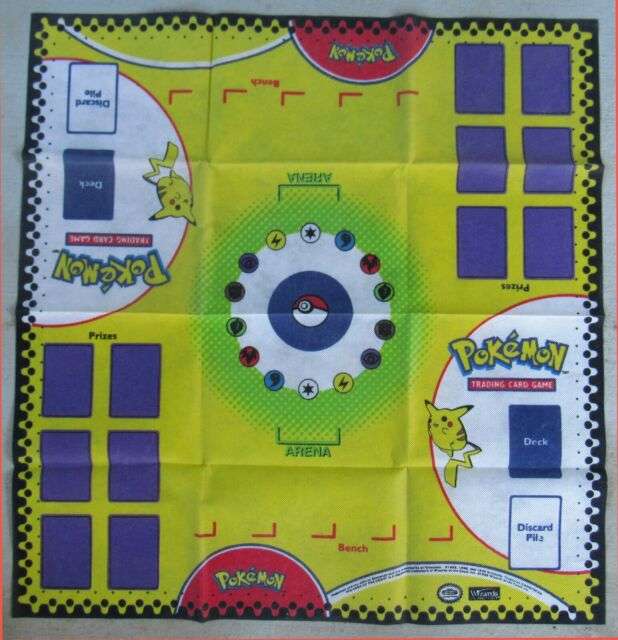Receiving A Steelix For A Luvdisc Is One Of The Best Trades Any Player Could Ever Hope For
In a pleasant shock to Pokémon fans, X & Y presents players with an incredibly tempting in-game trade, which occurs just before the second Gym Battle at Cyllage City. By trading an easily obtainable Luvdisc, the player can receive a formidable Steelix, just in time to face off against Grant and his Rock-types.
This is often talked about as being one of the most one-sided trades of the entire franchise, but only in a positive sense as it is in the player’s favor. Once it has been taught Bulldoze, the TM of which can be found in Lumiose, Steelix can be a powerhouse for the Electric, Fairy, and Ice-type Gyms.
Emolga Can Be Obtained In Black & White Or Exchanged For A Gigalith In Black 2 & White 2
Black 2 & White 2 were widely appreciated for offering a multitude of differences from the initial Gen V games. However, in terms of in-game trades, they completely flipped one particular trade on its head. Black & White saw a Hiker named Manny offer the player an Emolga in return for a Boldore, but in Black 2 & White 2 he instead asks for an Emolga in return for a Gigalith the evolved form of Boldore.
The Gigalith is of Adamant nature, boosting its Attack. It’s a valuable addition in time for the Flying-type Gym, but catching an Emolga can prove troublesome. The Black & White alternative of receiving an Emolga may not seem as appealing as the Gigalith. However, it can still be a fun Pokémon to use with its dual Flying & Electric-typing.
Should Have Traded: Luvdisc For Steelix
A Steelix for a Luvdisc? Yes, you read that correctly. Though X & Y had the infamous Gyarados for Magikarp trade, it also had a trainer named Farris in Cyllage City’s Pokémon Center who will trade a Steelix for a Luvdisc.
Thumper, the Steelix, is female and comes at level 20. Just the sheer size difference of the two Pokémon alone is enough to laugh at, but to receive such a strong and fully evolved Pokémon so early in the game will make the rest of the game undoubtedly easier.
Don’t Miss: Pokemon Go Max Bag Capacity
Kantonian Marowak For Alolan Marowak
The base game of Sword & Shield has some decent in-game trades, but with the addition of the Isle of Armor DLC, players are able to get their hands on some of the better regional variants in the series. One such variant, which is easily one of the best alterations to come out of Alola, is Marowak, which has the potential to have the Lightning Rod ability when traded.
In order to obtain this Marowak, however, players not only need to have a Kantonian Marowak, which can be easily caught in the Isle of Armor region, but they also have to track down the roaming trader who appears in multiple locations in the region. Unfortunately, this trade takes some trial and error as not only is her location randomized, but the Pokemon she puts up for trade is also random.
Obstagoon For Kantonian Mr Mime

Game Freak did the impossible when they made Galarian Mr. Mime, creating a version of this generation one Pokémon that is actually creepier than the original. If players want to relive the horrors of this original Mr. Mime, they can find one in an in-game trade in Spikemouth for an Obstagoon. Since this Mr. Mime is part Fairy-type, it is a decent option against Piers’ gym battle, though its Psychic-typing and abysmal defense stat means it may not last long in battle against his own Obstagoon.
Also Check: Eevee Pokemon Sun And Moon
Hawlucha Is A Fast Powerhouse In Ultra Sun & Ultra Moon
While the in-game trades on offer in Sun & Moon are mostly average, Ultra Sun & Ultra Moon raised the game entirely with one particular trade, where the player can trade in a Spearow and get Cha the Hawlucha.
Hawlucha’s Speed and substantial physical offense make it a powerhouse especially in the early game, not to mention its dual Flying & Fighting-typing, which makes it useful against Hala’s Fighting-types and much more. Spearow can be caught easily on Routes 2 & 3, so are hardly any trouble considering the reward for trading one in.
Maybe Should Have Traded: Yancy/curtis’ Random Trades
One interesting side quest in Black 2 & White 2 that many players might not have known about is Curtis and Yancy. By returning the Dropped Item to its owner , and then calling them 15 times, they will trade the player a different Pokémon every day, in exchange for whichever Pokémon the player chooses.
Some of the Pokémon they trade are certainly ways to fill up your Pokédex, such as Shellos, Spinda, and Phanpy, but they don’t offer much in terms of battle strength. Despite the lengths the player must take to unlock the trades, being able to obtain Pokémon such as Snorlax and Spiritomb evens out the deal.
Read Also: All Shiny Pokemon Qr Codes
How Many Pokemon Can You Trade In Pokemon Blue
Here are all the Pokémon that can be traded with in-game trainers in both Blue/Red and Yellow: As you know, there are a total of 151 Pokémon in the game but you wont be able to get all of them without trading with other Pokémon players. Here is a listing of what Pokémon are not found in the three respective versions:
The classic four evolutions from Red/Blue/Yellow evolve only by trading, while most Pokémon from later generations require an item to be held in addition.
Rocky The Onix Can Make The Gen Ii Early
Onix may well get a lot of grief for its absurdly disappointing stats in the games, but Pokémon Gold & Silver did their best to rectify this. The player can receive an Onix named Rocky by trade as early as Violet City home of the first Gym challenge for the small price of an easily obtainable Bellsprout.
Rocky is immediately useful against the Gym Leader Faulkner and his Flying-types, with the Rock Snake Pokémon also having significant type advantages and resistance over the following Bug and Normal-type Gyms. With Gen II being the introduction of Steel-types, Rocky the Onix can even be evolved later on, as long as the player obtains a Metal Coat and has a friend to trade with the end result being a bulky Steelix that gains boosted experience.
Don’t Miss: Bulbasaur Cross Stitch Pattern
Differences From The Anime
The game is loosely based on the original anime series, but has several differences:
- Brock does not surrender during the Pewter Gym battle and does not accompany the player thereafter.
- Misty is first encountered in the Cerulean Gym. In the anime, she had left the Gym when Ash met her . She also does not accompany the player on their journey in the game.
- Bulbasaur, Charmander, and Squirtle are acquired from tasks. In the anime, Bulbasaur was caught in a formal battle, Charmander was rescued from heavy rain, and Squirtle simply followed Ash.
- Meowth can use Pay Day and does not speak in the game.
Grimer For Alolan Grimer
As the Let’s Go games are remakes of the original Pokemon Yellow, there aren’t any Dark-type Pokemon native to the region, which can make trainers like Sabrina quite difficult for players to overcome. To compensate for this, players are able to trade Kantonian forms of Ratatta, Meowth, and Grimer for their Alolan forms, all of which are Dark-type.
Some of these trades are version-exclusive though, with this one being exclusive to Let’s Go Pikachu. The best of these Kantonian-for-Alolan trades, unfortunately for Let’s Go Eevee players, is Alolan Grimer, as its Dark- and Poison-typing is one of the best defensive combinations in the game as it is only weak to Ground-type moves.
Recommended Reading: Pokemon Go Characters List With Pictures
Pokemon Yellow Gift Pokemon Listings
Pokemon Yellow Walkthrough and Guide by warrior13HomeGuidesPokemon YellowThank you for printing this page from www.SuperCheats.com.Follow this guide to hear about updatesPokemon Yellow Gift Pokemon ListingsPokemonPokemon#1) Starter Pokemon In Pallet Town:Pikachu#2) Fossil Pokemon In Mt. Moon:Cinnabar#3) Bulbasaur In Cerulean City:PokemonPikachu#4) Charmander On Route 24:Pokemon#5) Squirtle In Vermilion City:PokemonVermilion City Gym#6) Old Amber In Pewter City:PokemonCinnabar#7) Eevee In Celadon City:Pokemon#8) Lapras In Saffron Silph Co Building:GiovanniSaffron CityPokemon#9) Hitmon Fighting Type In Saffron Dojo:Pokemon
What Are The Different Types Of Evolutions In Pokemon Yellow

It is very similar to Pokémon Red and Blue except Pikachu follows you around. This guide lists the evolutions of every Pokémon. There are three types of evolution in Pokémon Yellow Level Up, Stones, and Trading. Levelling up is the most common evolution. You earn experience points in battle whe you defeat a Pokémon.
Recommended Reading: What Pokemon Does Leader Sierra Use
Differences In The Virtual Console Release
| Jynx‘s original sprite | Jynx‘s recoloredVirtual Console sprite |
The Nintendo 3DS Virtual Console releases can link with other Virtual Console Generation I and II core series games via Nintendo 3DS wireless communication, simulating the Game Link Cable. When initiating a link, the Virtual Console menu on the touch screen replaces the Cable Club attendant’s dialogue. Additionally, all of the Game Boy Printer features are disabled, although the option still appears in the PC menu: when selected, the game acts as if the printing is in progress, even though, in reality, nothing is happening.
Using Poké Transporter, Pokémon can be sent from the Generation I core series games to Pokémon Bank, and from Pokémon Bank, they can then be moved to Generation VII core series games.
The moves Blizzard, BubbleBeam, Confusion, Dream Eater, Explosion, Guillotine, Hyper Beam, Mega Kick, Mega Punch, Psychic, Reflect, Rock Slide, Selfdestruct, Spore, and Thunderbolt had their animations changed slightly to tone down the flashing.
In the Western language releases, which are emulated in Game Boy Color mode, Jynx‘s battle sprites have been recolored to align with its modern design, recoloring Jynx’s black skin to purple. Jynx’s original design had previously been subject to controversy due to its resemblance to racial stereotypes of African-Americans. The Japanese release is emulated in Game Boy modewhich is monochromaticso no change was made.
Unused Gb Printer Function
If the Game Boy Printer is properly connected, then calling address 3A:4E79 will mute the game’s audio and attempt to use the printer to print a copy of the screen. For unknown reasons, if this is done on the overworld this will also glitch out the arrangement of tile blocks on the map, though the player can Fly/Teleport away if the original map was a normal town/route otherwise, setting D366 to 0x00 will allow the player to escape.
Recommended Reading: Malasada Serebii
Being Able To Obtain Alolan Variants Of Kanto Pokmon In Let’s Go Pikachu & Eevee Is A Game Changer
The in-game trades in Pokémon: Let’s Go, Pikachu& Let’s Go, Eevee went for a different approach with the limited Gen I roster, by giving players the chance to trade original versions of several Pokémon in return for their Alolan counterparts.
RELATED: Pokémon: 10 Best Regional Forms So Far, Ranked
Not only do most of the Alolan versions of Gen I Pokémon have more vibrant designs, but they also have more interesting and improved type combinations. In particular, the Dark-types are especially useful, as Psychic Pokémon are still incredibly tough to defeat in the Kanto games. Alolan Muk is the version exclusive Dark-type in Let’s Go, Pikachu, while Alolan Persian can be obtained in Let’s Go, Eevee. Both trades can be made before taking on Sabrina and her Psychic-types, which makes the battle much more manageable.
Should Have Traded: Cubone For Machoke
The best workaround to get the strong Pokémon you want without having to trade with others? This in-game trade, of course! Players of Pokémon Yellow could go to the Underground Path and trade a Cubone for Ricky’s Machoke, which would then evolve into Machamp after trading. It also holds a bitter berry, ironically sweetening the deal.
In terms of strength, Machamp beats out Cubone in many ways, having greater strength and a great final evolution. Machamp will absolutely give trainers an edge at the Viridian Gym, punching out all of Giovanni’s Pokémon.
You May Like: Best Moves For Exeggutor Pokemon Go
‘pokemon: Yellow Version’ Happens To Be My Favourite ‘pokemon’ Game As It Has Some Nice Features That Weren’t In ‘red/green/blue’ Versions See If You Spotted As Many As I Did This Game Is For The Game Boy Colour Enjoy :
10/1010/10
- Eevee.This Eevee was originally meant for you. Your rival got a bit hasty and decided he wanted that Pokemon, landing you with Pikachu.
- He doesn’t catch the Pokemon.In ‘Pokemon Yellow’, the old man tries to catch a Rattata, but he only has one Pokeball. On his first attempt at showing you he misses the Rattata, so he goes to the Poke Mart to buy more Pokeballs for his next demonstration.
- true.Pikachu used to be available to catch in the Viridian Forest in ‘Red/Green/Blue’ versions. They replaced Pikachu in the Viridian Forest because in ‘Pokemon Yellow’ you can now catch a Pidgey and its evolved form Pidgeotto at a low level.
- no.Mt. Moon is not redesigned for ‘Pokemon Yellow’. The floors are the same throughout Generation 1. Mt. Moon does get smaller in Generation 2. Mt. Moon is the first place you battle Jessie and James, the Team Rocket villains from the anime.
What Tools Is The Player Allowed To Use
The player is allowed to use almost any legitimate means within the cartridge for completing the game efficiently. The player is only allowed to trade to evolve Pokémon and not to receive outside help otherwise. The player is allowed to use items such as Potions, TMs, and Berries. X items are excluded from this list due to X Accuracy + OHKO moves being outlawed X Items outside of X Accuracy were excluded for consistency reasons. Keep in mind that items have opportunity costs associated with them and can negatively contribute to a Pokémon’s rank if it requires a multitude of items, such as two or more.
Glitches, such as the MissingNo. and Mew ones, were not considered due to their game-breaking natures. The only overworld “glitch” that was explicitly allowed was the one where the starter Pikachu’s happiness increases if potions are used on it, even if it’s at full health, as it affects only the availability of Bulbasaur in Yellow.
Recommended Reading: Pokemon Go On Kindle Fire
Never Should Have: Gyarados For Magikarp
Who authorized this to be in the game? The only possible reason a trainer would trade their Gyarados for a Magikarp is that they miss the endless grinding and training it took to evolve their Gyarados in the first place. Magikarp has a certain lovable quality to it, but not enough to suffer such a downgrade.
Caveat, found in the Kalos Hotels, suggests this farce of a trade, giving the player a level 5 Magikarp in exchange for a powerful Gyarados. NPCs are truly strange, especially to consider this a worthy trade. The only upside? The Magikarp’s name is Carpe Diem, though it really should be Caveat Emptor: “Let the buyer beware.”
Should Have Traded: Ditto For Rotom

Rotom was introduced as one of the many Pokémon haunting the Old Chateau in Sinnoh, and its popularity has only increased with its inclusion in the Alolan and Galar region games.
With six different forms in total, Rotom has true versatility and is somewhat similar to Ditto in this way, though arguably the superior fighter. On the battlefield, Rotom cleans up, and not just because it’s a washing machine. By trading any Ditto with Lillian on Route 15, you’ll receive a level 60 Rotom named Eeks, the only way to obtain a Rotom in the game without trading with other players.
Also Check: How To Get Umbreon Pokemon Shield
Under What Conditions Were Pokmon Tested
Every Pokémon was tested and ranked under these additional conditions:
- In Red and Blue, every Pokémon’s level was generally the same as each major opponent’s ace Pokémon, with Elite Four levels being between 50 and 54, depending on how many Rare Candies are used on each Pokémon.
- In Yellow, due to a sudden increase in levels after Erika, most Pokémon’s levels were as close to those of major opponents’ ace Pokémon as possible. This was typically done by fighting every single route Trainer that were available before fighting the Gym Leader. However, the Elite Four levels were still between 50 and 54, depending on how many Rare Candies were used.
- The list assumes a run with four Pokémon. However, it should be noted that a Pokémon performs best if it’s used as the only active member in a team, as it can be given any contested TM with no problems and can massively outlevel opponents due to receiving all the Exp. Points other teammates would receive instead.
All Pokémon are ordered alphabetically within a tier. The availability listed in each Pokémon’s entry is considered its most optimal one.